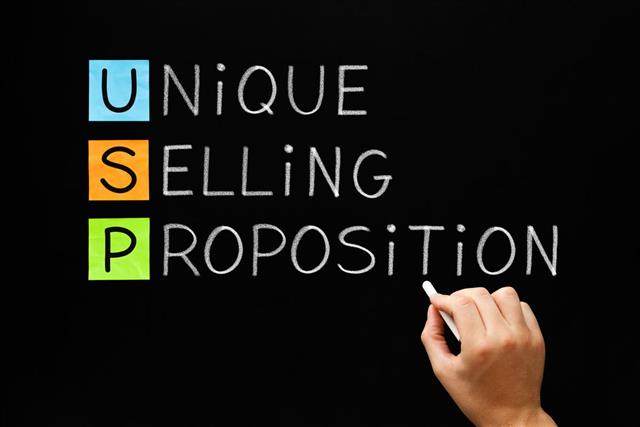
What is marketing mix? Commerce graduates will know the answer in a jiffy. And if you don't, never mind, just read on. The information given here will acquaint you with what a marketing mix means and what are its elements.
The term Marketing Mix can be defined as the framework of four variables, popularly referred to as the 4Ps. The amalgamation of the four variables employed, are optimized to promote their service or product in the market place is known as marketing mix.
Having answered the question, it is time to move on to what constitutes the ‘4Ps theory’. The definition is incomplete without mentioning them. The 4Ps of the marketing mix strategy could be listed as
- Product
- Price
- Place
- Promotion
In the recent times, 3 more Ps have been included. People or Personnel, Physical layout and Processes respectively.
The Marketing Mix
Product
The first P is Product. Product, in the most basic terms, could be defined as the unit that the business company wants to sell in the market. The business is equipped with marketing strategies to sell their products in the market.
A notion developed in the earlier times that a good product will earn for itself does not hold good any longer. With a product boom in the market, it is evident that every product has a standard to maintain and it maintains it well, in order to survive in the market. Therefore, the layout of the product becomes very important.
The product being offered to the customers should have its characteristics mentioned. This includes the direction of usage, date of manufacture and expiry, contents or ingredients, service, warranty. It should also include the distinguishing characteristics of the product.
Every product should have a Unique selling proposition(USP). Market is flooded with products of a kind, having different brand names attached. It is here that each product needs to be differentiated from the other. Thus, the concept of packaging and the phenomena of newness plays a vital role.
At this stage, it is also important that we understand the dynamics and the nature of the product in question. Every product that the marketing strategist takes into consideration consists of realms or what we may refer to as ‘levels’ of a product. There are precisely three levels in a product. The core product, the actual product and the augmented product.
Core Product
The core product is the inherent strata that makes possessing the product worthwhile. We are keen to possess a particular product because it boasts of benefits that are typical or novel to the product in question. The core level of the product is a component that you experience and may not be necessarily tangible.
You buy a particular toothpaste due to its properties of fighting teeth sensitivity. The benefit that you derive is relief from the tooth ache and shock sensation when you eat something that either hot or cold. This benefit is exclusive to the product and may also be referred to as the USP of the product.
Actual Product
The actual level of the product is a tangible one, a component that you are aware of and are totally convinced by, due to its physical characteristics and overall appearance. The actual product may be referred to as a package that we are to carry along. It would be the toothpaste that you would buy, use and derive the benefits from.
Augmented Product
The augmented level of the product is the upper crust of the product. This feature involves the coverage that you receive along with the product.
Guarantee and warranty period, the after sales services, product feedback cells, the process of installation or the direction of use are characteristics that may be found in the realm of the augmented product.
Tools for Evaluating a Product
Product Life Cycle (PLC)
Another marketing tool for evaluating a product in question is termed as Product Life Cycle or PLC. It is called so because it has a process that is staunchly followed by a product.
There is indeed no paradigm shift that the product incurs. One may draw parallels between the human and product life cycle. The basic similarities that we notice are the stages of development.
Just as humans have stages of being a neonate, adolescent, followed by youth, adulthood, middle age and old age; products also have a cycle where they are launched into the market zone, are given the time and promotion for growth, experiencing a peak in their market status followed by the maintenance period, consequently diving into the declining sector.
However, let’s make it very clear, that all products do not follow the same routine of maturity and fall in the market arena. It may be very likely that the product may skip the betwixt stages altogether and hop from its launch and dive straight into a decline and finally withdrawal stage.
Thus, it would be practically defective an inference to put forth that all products carry with them a fixed-cum-mandatory life cycle to adhere to.
Customer Life Cycle (CLC)
In theory, the CLC concept runs in conjunction to that of PLC. The customer life cycle looks at the services and products that it can offer the customer and thereby fulfill their needs, preferably for a lifetime.
The basic similarity between PLC and CLC is that of the array of growth however with differential variables being involved. Where PLC concentrates on tracking the velocity of growth leading to maturity of the product in the market; CLC is developing and maintaining the relationship between the customer and the organization.
It is important to spell out that the customer life cycle may not remain common for all products and services, as each company is catering to different set of needs of the customers. Thus, in such a case, it is virtually unrealistic to compartmentalize the guidelines that are followed by all products.
Price
The second component is Price. Price is the amount the company will charge for offering the product to the customer. Pricing is considered to be an important step. The pricing should be according to what the product has to offer.
If the pricing of a particular product is too low, the general tendency of the customers that the product is of sub-standard quality, reflects in the sale.
On the other hand, if the pricing is too high, not many people would be interested in buying the product. The price tag scares them off. A flip side to this is the consumer behavior. The consumer is often led to think that a product that is priced high, has to be good. Well, not necessarily.
Pricing and quality do not always complement each other. Deciding on a pricing strategy is indeed, a tough ball game!
Place
The place factor, too, contributes to the marketing mix. The availability of the product at the desired time and the desired place is what the strategy focuses on. Placement strategy becomes mandatory as the products need to be available to the customers when they want them.
A part of the placement strategy is to get the shopkeeper or retailer to notice your product and provide it with a prominent space or shelf . This increases the probability of the product getting sold.
This also encourages the customer to pay heed to the product. The visibility of the product becomes a point where sale could take place.
Promotion
The fifth component and a stage where the product finally goes on the floor is Promotion. The act of promotion involves publicizing the product. Masses come to know about the product’s existence through promotion.
Magazines, newspapers, television are the popular modes of conducting promotion.
Another mode is on-line marketing services. The Internet is cheap and highly effective.
The promotion activity is now a full-fledged gimmick that elevates the interest of the consumer by devising certain clues and hints that characterize the product. This is done before the product is physically launched in the market. This tactic increases the curiosity of the consumer and gets him excited to discover what the product has to offer.
People or Personnel
To include people as the component of a marketing mix becomes very essential. It is the people who make services and products a success and they are the ones who have the power to tarnish the image of the product.
People like to communicate or interact with people who are courteous in nature. The attitude and the behavior of the employees makes a lot of difference.
Physical Layout
There were times when customers and clients did not come in direct contact with the retailers, but now times have changed. Customers do come in contact with the retailers and pay attention to the physical qualities of the shop.
The appearance of the outlet, style of presentation and the easy accessibility of products are prerequisites to crown the shop with the tag of having an attractive and appealing physical outlook.
In terms of services, customers do require a standard to be maintained. For instance, students who procure admission in a reputed college, have high expectations in terms of the quality of education, faculty and the facilities, amenities and opportunities provided by the institution for an all round development.
Process
Processes is an important element. It is a component that makes marketing work effectively and proficiently in an organization.
Processes, to explicate a few, include, dealing with customer complaints, interacting with customers and understanding their focal requirements and demands and handling orders received by customers.
Thus, the 7Ps explain the meaning of marketing mix in a comprehensive manner.












